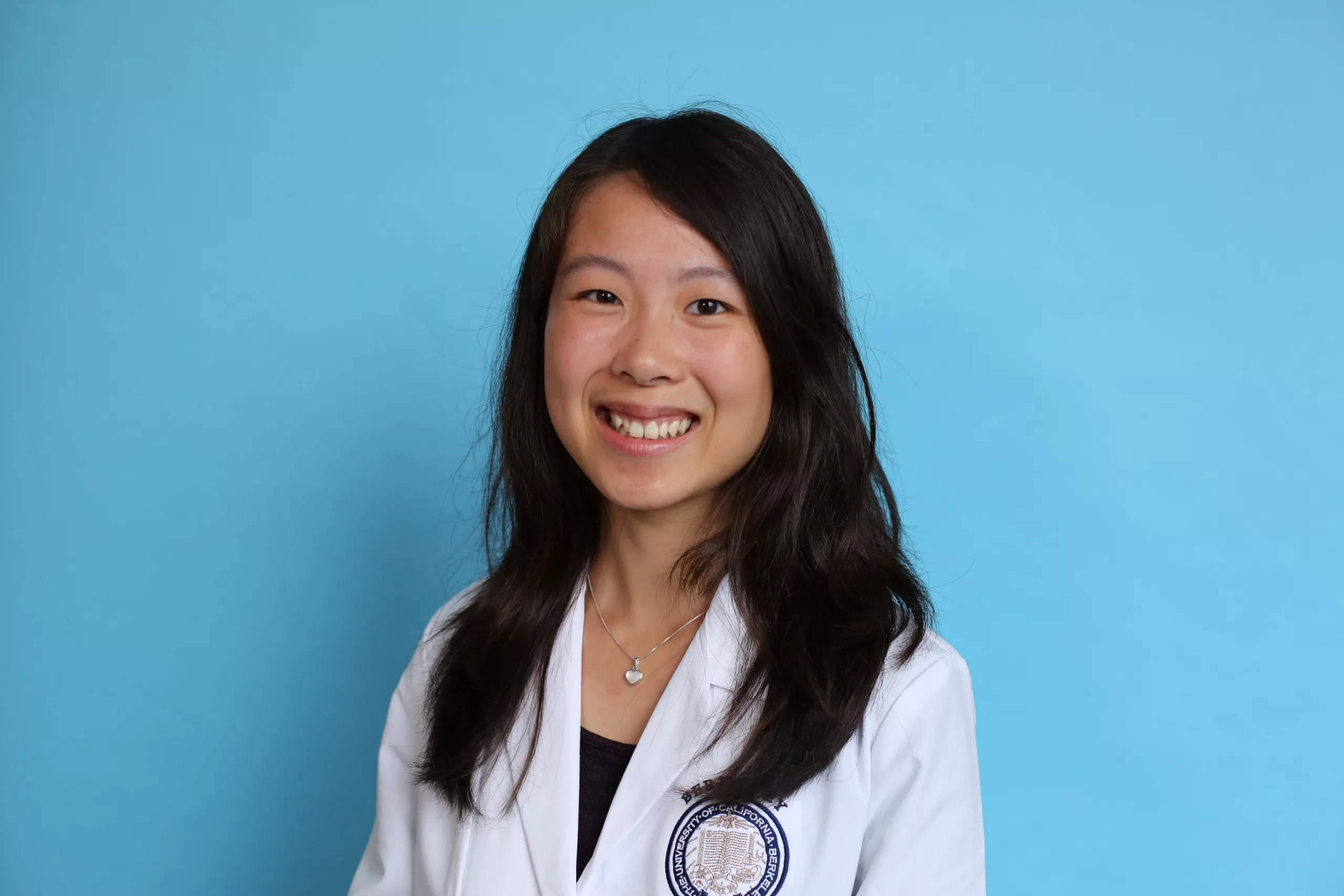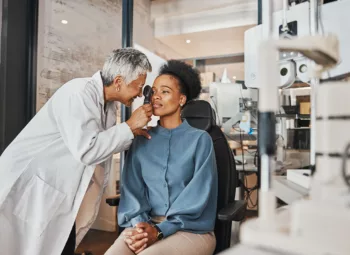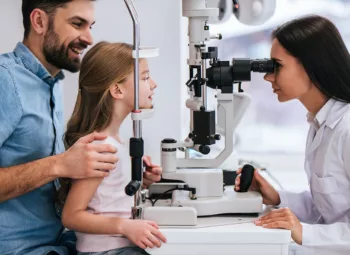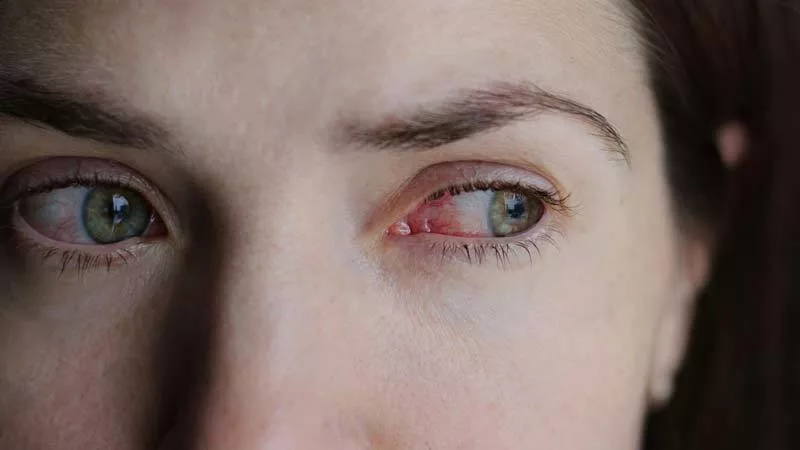
Eye infections are extremely common conditions typically caused by bacteria, viruses, allergies, or fungi. They can affect people of all ages and walks of life, and are typically uncomfortable but non-threatening issues.
Three of the most common eye infections are conjunctivities (pink eye), blepharitis, and styes.
Conjunctivitis (Pink Eye)
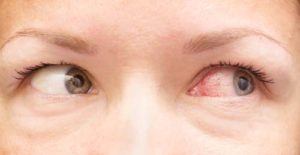
What is it?
Conjunctivitis, more commonly known as pink eye, is an infection of the conjunctiva. Pink eye causes the conjunctiva to become inflamed, uncomfortable, and sometimes full of a watery/pus discharge. Most types of pink eye are extremely contagious and can be spread from person to person easily.
There are three types of pink eye:
- Viral Conjunctivitis: The most common and contagious form.
- Bacterial Conjunctivitis: The bacterial and contagious form.
- Allergic Conjunctivitis: Pink Eye that comes as a result of an allergic reaction and is the only non-contagious form.
Most people become infected with pink eye through direct contact with an infected person’s secretions via hand to eye contact. Pink eye can also be caused by improper cleaning of contact lenses.
Treatment and Relief from Conjunctivitis
Treating pink eye depends on the type:
Cold or warm compresses will help to decrease pain and reduce swelling discharge on all types. Be sure to use a different compress for each eye, so you do not spread the infection from one eye to another. Best practice is to clean your eye from the inside towards the outside. Wash your hands thoroughly after using compresses and carefully dispose of any washcloths or tissues used.
Viral: Viral conjunctivitis is typically not treated with any medications. Home treatment like cold or warm compresses as described above will help clear up viral pink eye within 3-5 days.
Bacterial: Antibiotics may be prescribed for the treatment of bacterial conjunctivitis. Antibiotics are typically delivered via eye ointment or drops. Home treatment can help to alleviate discomfort while antibiotics are being taken.
Allergic: Allergic pink eye may be treated with antihistamines. Your doctor will help determine the correct course of action for pinkeye related to allergies.
Blepharitis
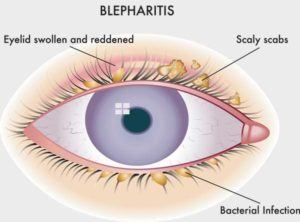
Blepharitis is a very common, non-contagious Infection of the eyelid. It is caused by bacteria and dandruff on the eyelid which affects eyelashes and/or tear production. Blepharitis causes your eyelids to become swollen, red and itchy. Some experience scaly dandruff-like symptoms on their eyelashes and eyelids as well.
Causes of blepharitis range from a bacterial infection, lice, allergies, hairspray, cat fur, and irritants such as cosmetics or cigarette smoke and or to abnormal fat production in the eyelids.
Treatment and Relief from Blepharitis
Blepharitis is a reoccurring skin condition which can be effectively managed. Good hygiene practices such as frequent cleansing of the eyelids with a clean washcloth, warm water and, in some cases, mild soap (baby no tears formula) can prevent the build up of bacteria and remove the crusty discharge. A topical antibiotic and/or a reduced-strength corticosteroid can also effectively treat most cases of blepharitis.
Ineffective care or lack of treatment for blepharitis may lead to the development of an abscess within the eye called a stye, or a firm nodule called a chalazion.
Stye
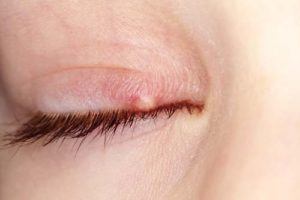
What is it?
A stye is a very common condition wherein an oil gland on your eyelid becomes infected and develops a small, red uncomfortable lump. A stye is caused by a bacterial infection and is an uncomfortable but rarely serious condition.
Stye symptoms include a small pimple-like bump on the edge of the eyelid and some pain and swelling.
Treatment and Relief from Styes
The majority of styes heal on their own without need for treatment. They typically swell and burst within 3 or so days, and then completely heal within a week. Applying a warm compress to your stye for 10 or so minutes multiple times a day will help alleviate some of the discomfort and speed up the healing process. Never attempt to squeeze or pop a stye- allow it to break open on its own.
You should avoid wearing eye makeup or contacts while you have a stye. Styes are also contagious, so be sure to exercise caution and regularly wash your hands.
If your stye does not heal on its own, you will need to contact your ophthalmologist. You may then be prescribed antibiotics or your doctor will need to lance the stye so it can heal.
Styes do tend to reoccur, but if you find yourself getting frequent styes you may want to speak with your doctor about further treatment to take in order to lessen their reappearance.
Eye Infection Treatment at NeoVision Eye Centers
If you have any concerns about the common eye infections described or are concerned about eye-related symptoms you are having, please do not hesitate to call one of our locations to make an appointment.
Are You Experiencing Eye Infection Symptoms?
If you are experiencing symptoms of an eye infection, call at 510-431-5511 (Union City) or 650-962-4626 (Mountain View) or fill out the form below to schedule an appointment at NeoVision Eye Center.
"*" indicates required fields

